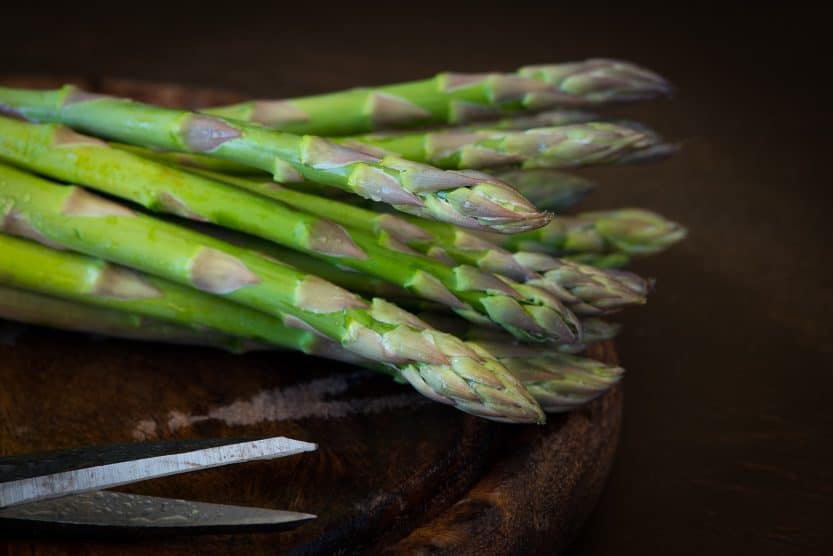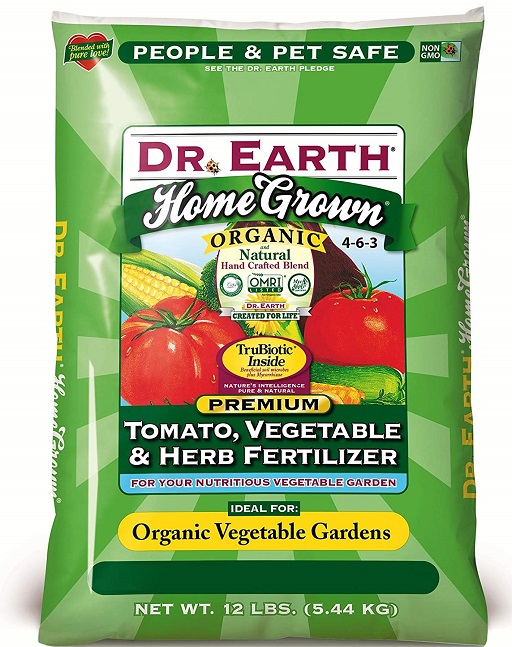Asparagus is one of the first crops ready for harvest in late winter or early spring. The asparagus plant is a perennial plant which can live for 10 to 20 years in your garden. The best place to grow asparagus is in an area that has long cold winters or dry summer conditions. Areas that have very temperate winters, or very wet summers conditions, can limit the plant’s ability to thrive.
Buy Asparagus Crowns Online
| Image | Name | Rating | Shop |
|---|---|---|---|
 | Purple Passion Asparagus 25 Roots | ||
 | 10 extra large 2nd year Green Asparagus Plants | ||
 | 50 Asparagus Roots Jersey Supreme |
Growing Asparagus From Crowns
For the most part, people start asparagus from one-year-old crowns, as this speeds up the establishment period, which makes it possible to get the first substantial harvest two years after planting. On the other hand, if you decide to grow your asparagus from seed, then expect a three-year wait until your first harvest and a low germination rate, which is common amongst this species.
Growing Asparagus Crowns From Seed
The benefits of planting from seed sometimes manifest in better-established plants which yield more over their lifetimes. Sometimes, two-year-old crowns are available from some distributors, with claims that your first harvest will be in one year; but in most cases, the transplant shock makes it more likely that a full harvest will be in two years either way.
Asparagus seeds are readily available; however, year old crowns are usually only available in the late winter or early spring. The asparagus plant is either male or female, with the males yielding much larger harvests. Therefore, most people plant all male plants in their garden for better production.
Selecting Asparagus Crowns
When purchasing crowns, some suppliers have all-male asparagus plants available which makes this practice much simpler. In some climates, the asparagus plant is susceptible to rust. Rust-resistant varieties are available, such as “Jersey”, for those climates. When selecting plants, look for full, healthy-looking crowns with no signs of rot or decay. Be sure to plant them within two days of purchase, so as to avoid the crowns drying out, which can lead to poor establishment or death of the plant.
Planting Asparagus

The best location to plant your asparagus plant is in an area of your garden that has access to full sun. Asparagus plants need a very well-drained soil, because the plant originated in maritime environments, so a sandy loose soil is recommended. Due to its maritime origins, asparagus is much more tolerant of saline soil conditions than other plants.
How Far Apart to Plant Asparagus?
When planting asparagus, dig a trench about 6 to 12 inches (15 to 30 cm) wide with a row spacing of 2 to 3 feet (.6 to .9 m). Add any compost or soil amendments to the middle of the trench and mix well with the native soil.
Before planting the crowns, let them soak in lukewarm water for about fifteen minutes so that the roots are well hydrated before being placed in the soil. Plant the crowns in the trenches spacing them about 18 inches (30 to 45 cm) apart, while making sure to spread the roots out evenly as you place them in the soil.
Asparagus Planting Depth
Cover the roots and crown with soil up to a depth of 2 to 3 inches (5 to 7 cm) and water deeply after planting. After two weeks, backfill the trenches with 1 to 3 inches (2 to 7 cm) of soil, in order to keep the crowns covered as the soil settles. Mulching asparagus can also help, so you can spread 4 to 8 inches (10 to 20 cm) of mulch on top of the planting area to help retain moisture.
Asparagus Care

Caring for the asparagus plant while it establishes for the first two years is a matter of keeping the soil moist and weed free. Early on, weeds can be the biggest problem for an immature asparagus plant; while its roots are poorly established, the weeds can out-compete the plant and kill it. When weeding the asparagus beds, you must be sure to lightly till the soil so as not to damage the young shallow roots of the plant.
How to Fertilize Asparagus
Fertilize asparagus plants every spring with good liquid or time release fertilizer (Buy Online), in order to promote early strong growth. Be sure to check your plants for any signs of asparagus beetle infestation, as they can be found during the summer feeding on the ferns and leaves. If spotted, promptly remove any eggs or beetles you find.
When Can You Harvest Asparagus?
Harvesting the plants once they have been established for two to three years is as simple as cutting spears every few days. Spears are ready to be harvested when they are 6 inches (15 cm) tall, by using a sharp knife and making a clean cut at the base of the spear. The harvest period for a three-year-old plant is about two to three weeks. Then you can let the plant rejuvenate for next year.
After the first year’s harvest, the harvest period can be extended from four to five weeks, and thereafter, to six weeks. At the end of the harvest period, allow the stalks to reach full height so as to transfer nutrients to the roots and to help the plant survive winter. Before winter settles in, you can add a mulch layer to the soil to protect the roots, although this is not always necessary.








